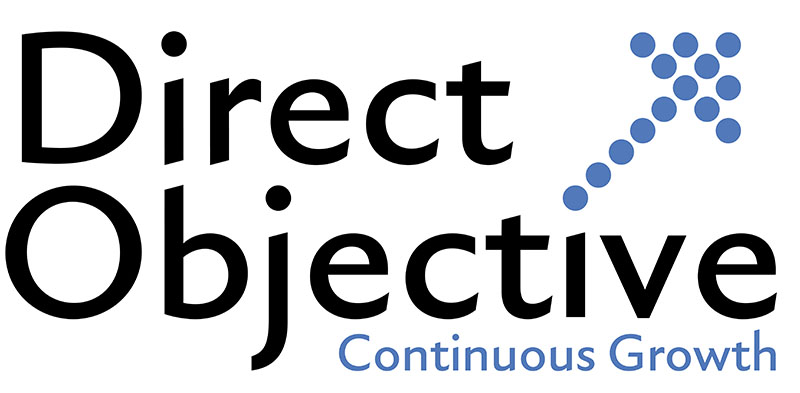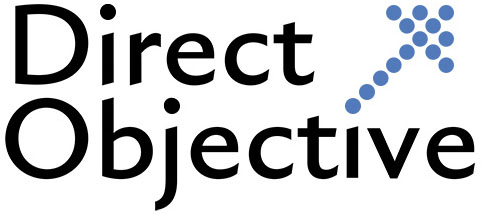Ever wondered what formula makes a B2B site successful? Research suggests that web visitors form 75% of their initial judgment on a website’s credibility purely on its aesthetics. But not for long! Once the aesthetic appeal does the initial trick, the value of your website transcends into a whole new level that is pivotal in driving new potential clients.
 75% of B2B website trust is supported by initial aesthetics
75% of B2B website trust is supported by initial aesthetics
In this blog post, we will take a look at the components of an effective website for B2B lead generation from a user experience perspective. We will briefly explore the differences between B2B and B2C website design, get a closer look at the dynamics between user interface & experience, and list the top considerations to create a winning B2B website with the ultimate goal of generating quality leads.

B2B Site Compared to a B2C Website
The essential commons between B2C and B2B websites are:
-
-
- Clarity
- Conciseness
- Captivating interface
- Comprehensive product/service information
-
However, the sites’ use differs significantly depending on the following aspects:
| Aspects | B2B Website | B2C Website |
| Customer Journey | Optimized for a long series of non-linear interactions to gain knowledge, trust, and best-fit | Emphasize instant gratification and emotional purchasing |
| Personas Involved | Collaborative effort by various individuals with diverse roles and responsibilities | Individual consumers |
| Lifetime Value (LTV) | Higher LTV based on ongoing engagement, communication, and satisfaction | Emotional, sometimes impulsive to change or keep a solution |
(Check out more on this topic at B2B vs. B2C Comparison Table.)
User Experience is Critical
Where relationships and partnerships hold immense significance, the interface becomes a means to an end – a pathway that guides users toward seamless, intuitive, and productive interactions. In other words, the interface of a B2B site should not be designed solely for the purpose of aesthetics, but to help create a meaningful experience.
B2B website design needs to focus on building the following qualities to drive impactful decisions along the B2B buying journey:
-
-
-
Effective Communication:
As mentioned before, a visually appealing website undoubtedly helps with the first impression. But the true B2B communication success lies in the fact that it’s the user experience that wields superior influence in molding buyers’ decision-making. In this context, the interface becomes a strategic conduit for realizing B2B buyers’ engagement.
A B2B website should be capable of communicating complex information and addressing multiple B2B stakeholder personas in different touchpoints. Effective communication propels web visitors along their path, while the overall experience keeps them invested, fostering a connection that can potentially extend beyond the digital.
-
-
-
-
-
Enhanced Engagement:
The experience must also enhance value through seamless and productive interactions. Engagement is a facilitator for conversion and one of the key areas where interface and experience intersect.
The interface can elevate engagement by personalizing experiences to match the unique personas involved in the B2B decision-making process. This approach not only captures attention but also cultivates a lasting relationship that helps foster a deeper connection.
-
-
-
-
-
Conversion Optimization:
The ultimate goal of a B2B site is conversion – the transformation of anonymous visitors into leads and ultimately, enduring customers. Businesses should mount values, build trust, and streamline the decision-making process, providing the necessary information for potential clients to confidently move forward.
A well-crafted and appealing interface, based on a well-designed and compelling user experience, optimizes conversion rates by guiding users towards well-informed choices, ensuring that the visual allure of the website translates into tangible business outcomes.
-
-

What's Your MarketingReadyTM Ranking?
Click here to assess your business’ B2B Marketing Proficiency
Success Factors for a Compelling B2B Site User Experience
Let’s explore a few considerations that we at Direct Objective believe hold huge significance to the success of B2B websites:
-
Persona-Centric Design
A persona-centered approach to website design recognizes that every visitor represents a group of people with similar characteristics who share a set of needs and goals. Therefore, it would be essential to define those personas and adhere to their specific profile preferences when designing an experience, particularly given the complex and multifaceted B2B buying process.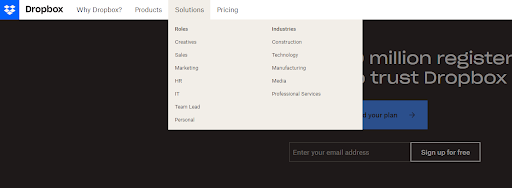
Persona-Based Solution Presentation (Dropbox)
To this end, persona-centered design guided by analytics-backed data serves as a strategic compass while shaping creative choices for your corporate B2B site. -
Data-Driven Personalization
Data-driven personalization is equal to precisely delivering content that resonates with an individual at the optimal instance, based on sufficient data. In other words, it is the art of providing value to someone precisely when it matters the most. The era of generalization has given way to a new paradigm. In a Google & Econsultancy survey, 90% of leading marketers say that personalization significantly contributes to business profitability.
 Personalized for the Hospitality Industry (Image, title, and CTA) (Adyen)
Personalized for the Hospitality Industry (Image, title, and CTA) (Adyen)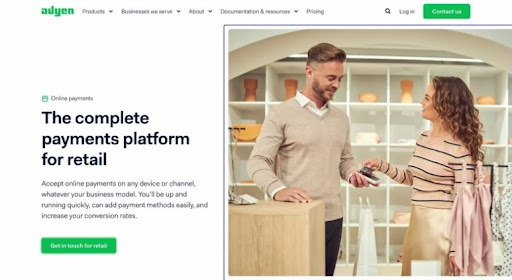 Personnalisé pour le commerce au détail (Image, title, and CTA) (Adyen)
Personnalisé pour le commerce au détail (Image, title, and CTA) (Adyen)Nowadays B2B firms have a remarkable amount of data or tools within their reach that can be used for personalization to align with the inclinations of their prospective clients and thus speak directly to their expectations and preferences.
Parameters such as geolocation, technology (e.g., mobile/desktop/android/IOS), traffic source (search keyphrase/referring site), third-party data, behaviour, explicit intention data (CRM), time, and current page are among the types of data that can be used for personalization. Based on the data, you can provide dynamic information, and personalized recommendations, notifications, messages, or landing pages to further enhance your audience’s engagement.
-
Conversion-Driven Mindset
Persona-centered experience and website personalization guide visitors through a journey that fosters engagement. But is it enough to drive actions?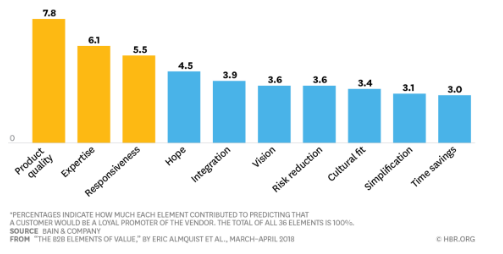
The B2B elements of value in a buying decision (HBR)
In an interesting HBR article written by Bain & Company, the authors lay out the foundation of what makes B2B buyers loyal or in other words what elements will create value so that your B2B buyers will convert. We can see that the top three are product quality, expertise, and responsiveness. All three are elements that can be projected through clear messaging, concise navigation, and strategically placed CTAs (Call-to-Actions). The presentation of information should be insightful, addressing the unique value points and aspiration to resolve the specific B2B persona’s pain from a know-how perspective.
The design should make it effortless for visitors to access essential information, such as product benefits, explicit feature/service list, industry best practices, pricing, success stories, and how to contact the right person. A conversion-oriented B2B site helps transform anonymous visitors into potential clients in no time.

-
Gaining Extra Knowledge About Prospective Clients
Now that you’ve managed to enlarge the pool of prospective clients, what do you need to know in order to close these opportunities into paying deals? Understanding prospective clients and their behaviour is a cornerstone of effective B2B website design. The website should empower businesses to amass a wealth of knowledge, as visitors navigate through the site. This information not only enhances the personalization efforts but also equips sales and marketing teams with invaluable insights to drive successful engagements
Creating upsell/cross-sell opportunities by providing a product portfolio on one integrated platform (Salesforce)
-
Creating Opportunities for Upselling/Cross-Selling
Furthermore, B2B website design isn’t just about capturing leads; it’s also about creating opportunities for upselling and cross-selling to already-customers as well. Knowing that clients are visiting your site will allow you to encourage them to explore products/services that they have yet to consider. This allows you to broaden the relationship with them and ultimately, boost your business’s bottom line.
Final Words
B2B websites are not just visual brochures. They serve as strategic tools to advance the business revenue as they propel visitors forward in the sales funnel.
B2B buying journeys have evolved to be more complex, non-linear in nature, and involve multiple stakeholders in the decision-making process. A good B2B website is one that empowers decision-makers throughout the entire customer journey.
While the aesthetics hold significant value during the initial few seconds of the web visit, the true measure of a B2B site’s worth lies in its ability to deliver tangible ROI.

